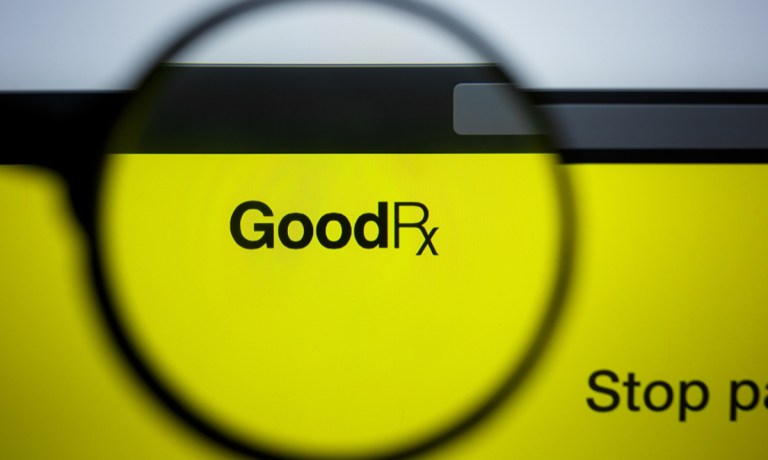
Healthcare’s digital transformation is increasing the emphasis on cost transparency and democratizing treatment access.
And that’s good news for GoodRx, a consumer-focused digital healthcare platform that aims to lower the cost of healthcare in the United States.
“We’ve locked in on creating value for consumers and ended the year strong building on our third quarter progress with accelerating momentum in the business, both financially and operationally, in the fourth quarter,” said Scott Wagner, interim CEO at GoodRx, during the company’s earnings call Thursday (Feb. 29) presenting its financial results for the fourth quarter and full year 2023.
“We’ve been ruthlessly focused on driving prescription-savings events by leaning into our deep relationships with retail partners, bringing the fundamental benefit of GoodRx to commercial plans through our integrated savings program and bringing savings to brand drugs through our pharma manufacturer solutions offering. These all reinforce our value proposition and are expected to continue driving topline growth in the first quarter and the full year 2024,” Wagner added.
The company’s stock is up on the news of its latest reporting, briefly jumping up more than 20% before settling in the mid-to-high-teens as of reporting.
“We are guiding to first quarter revenue and Adjusted Revenue in the range of about $195 million to $198 million, representing about 6% to 8% year-over-year growth, and Adjusted EBITDA Margin in the high twenty-percent range, potentially up to 30%,” said Karsten Voermann, chief financial officer at GoodRx.
Read more: Earnings Season Shows Continuing Evolution of Digital Healthcare Transformation
Of course, the healthcare industry’s ongoing digitization is not without risks.
A security breach last week (Feb. 21) at United Health Group’s (UHG) Optum Change Healthcare platform caused complete disruptions at healthcare clinics, medical billing companies and pharmacies that continued for days, with the aftereffects still being felt.
“Change Healthcare can confirm we are experiencing a cyber security issue perpetrated by a cybercrime threat actor who has represented itself to us as ALPHV/Blackcat,” a UHG spokesperson said in a Thursday email to PYMNTS.
“Our first quarter guide includes our current estimate of the impact of the recent system outages disclosed by UnitedHealth Group that we believe, at this early stage, is not reasonably likely to have a material impact on our financials, despite the impact lasting a couple of days,” said CFO Voermann.
“We’ve been really pleased with the performance of our tech teams,” Voermann added. “They did an amazing job in creating alternatives for us in the context of what switches we use and being able to shift our volume quite rapidly. That’s one of the big reasons we refer to this as being an issue that affected us for a couple of days, versus an issue that affected many in the industry for a longer period of time.”
Each month, PYMNTS tracks the most popular mobile apps in the prescription space for the Provider Ranking of Prescription Apps. By observing app use metrics, we score applications to determine the top players. As of January, GoodRx led the pack for the sixth consecutive month.
See also: Change Healthcare Hack Leaves Smaller Providers Low on Cash
Per its latest financials, GoodRx’s prescription transactions revenue increased 11% to $143.9 million compared to $129.4 million, primarily driven by an 8% increase in Monthly Active Consumers as well as quarter-specific favorability related to certain client contracts.
Subscription revenue decreased 6% to $23.1 million compared to $24.6 million, primarily driven by a decrease in the number of subscription plans due to the anticipated sunset of our partnership subscription program, Kroger Savings Club, the company noted.
“The nice thing about GoodRx and our value prop is, if there’s an individual and we know what their condition is, and what kind of insurance they have, you could pretty much map the savings benefit that we can do to that individual to a super precise amount,” Interim CEO Wagner said.
According to “The Digital Platform Promise: What Baby Boomers and Seniors Want From Digital Healthcare Platforms,” a significant majority of consumers across all demographics — more than 80% — said they’d prefer using platforms to access pharmacy benefits, including discount cards, and a similar percentage said the same about using digital channels to access and compare information about health insurance plans and benefits.